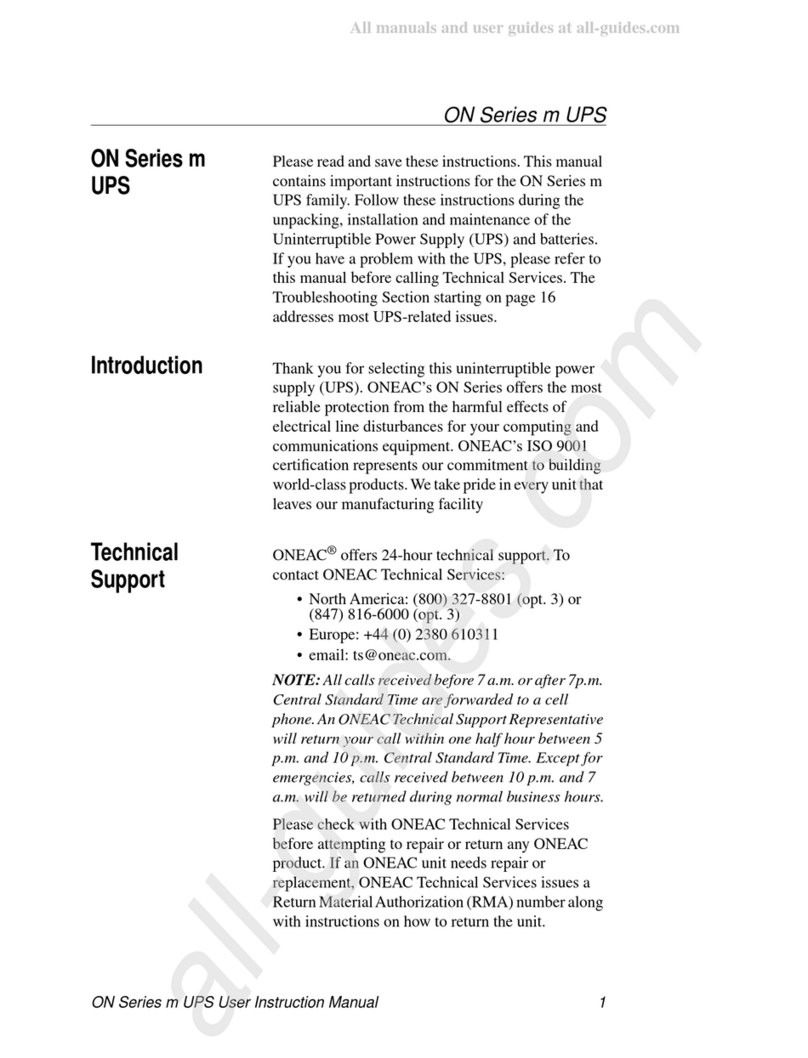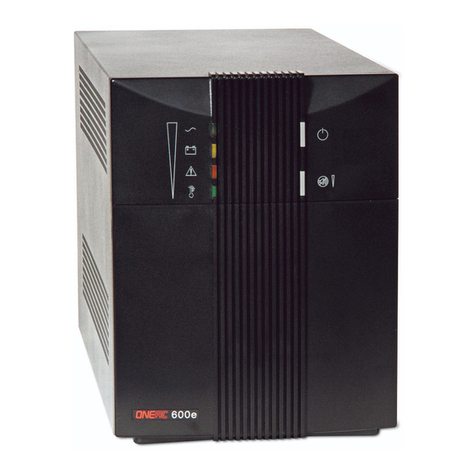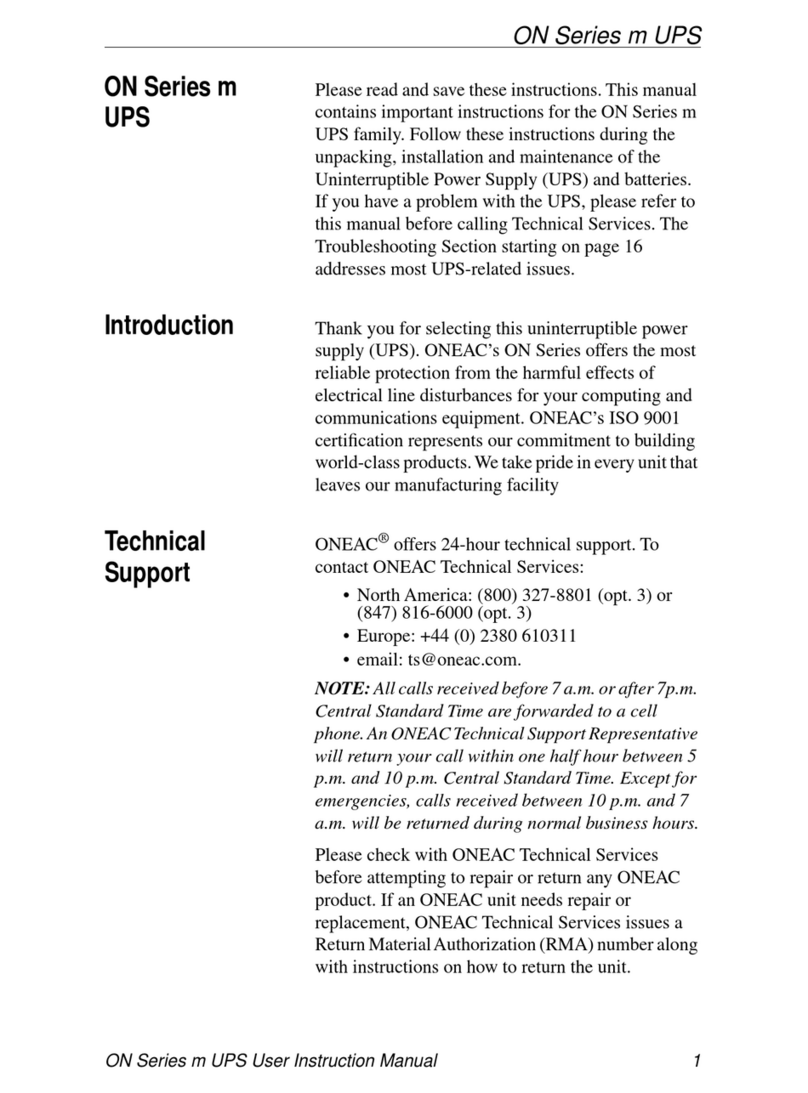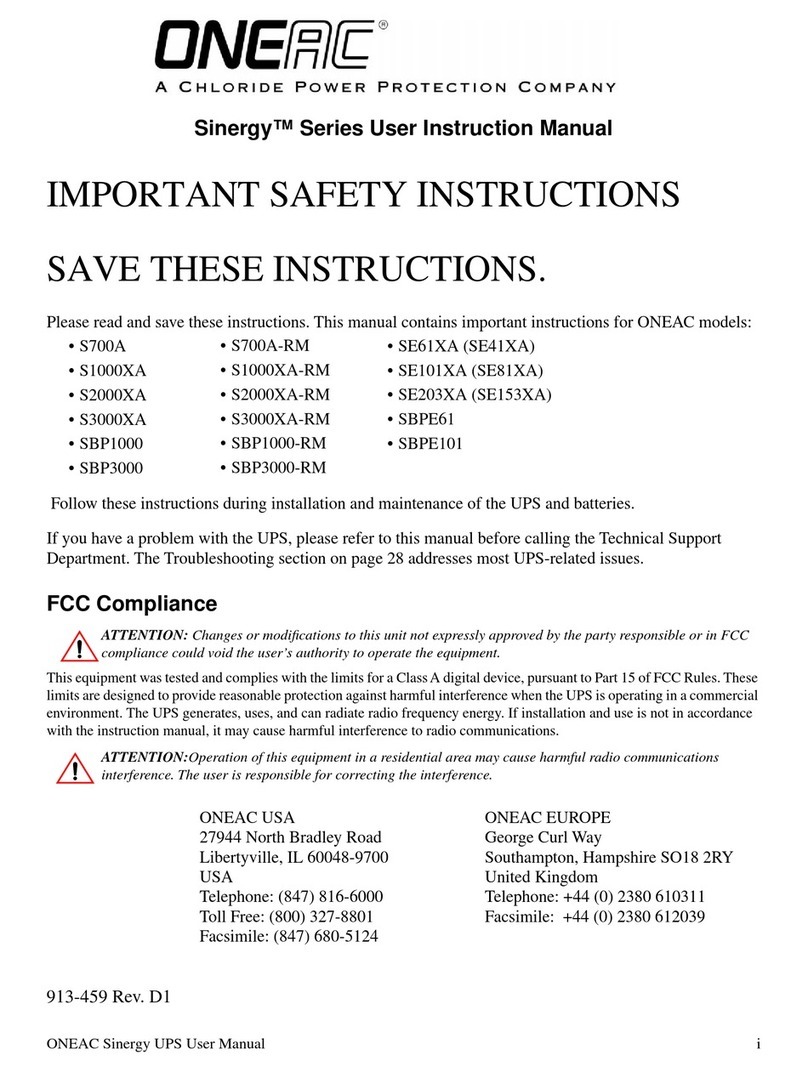
Sinergy S II Series Series UPS User Instruction Manual i
Sinergy® S II Series User Instruction Manual ......................................................................................................................i
Introduction .....................................................................................................................................................................1
Registering Your ONEAC UPS ...........................................................................................................................................1
Technical Support .............................................................................................................................................................1
FCC Compliance ..............................................................................................................................................................1
Safety Compliance ...........................................................................................................................................................1
About This Manual ....................................................................................................................................................1
Symbols .....................................................................................................................................................................2
Safety ...............................................................................................................................................................................3
Intended Use .............................................................................................................................................................3
General Warnings ......................................................................................................................................................3
Safety Notices ............................................................................................................................................................3
Battery Safety ............................................................................................................................................................4
Repacking of Unit ......................................................................................................................................................4
Setup ...............................................................................................................................................................................5
Delivery ......................................................................................................................................................................5
Unpacking .................................................................................................................................................................5
Storage ......................................................................................................................................................................6
Environmental Conditions ..........................................................................................................................................6
Floor Loading .............................................................................................................................................................6
Ventilation .................................................................................................................................................................6
Installation .......................................................................................................................................................................6
Rack-Mounting the UPS or External Battery Cabinets .................................................................................................7
Tower (Floor) Mounting and External Battery Cabinets ...............................................................................................8
Electrical preparations ................................................................................................................................................9
Connections ..............................................................................................................................................................9
Theory of Operation .......................................................................................................................................................10
UPS Mode ................................................................................................................................................................10
Battery Mode ...........................................................................................................................................................10
Bypass Mode ...........................................................................................................................................................11
Front Panel Display and Control ...............................................................................................................................11
System Indicators .....................................................................................................................................................12
Rear Panel ................................................................................................................................................................13
UPS Start-up & Shutdown ..............................................................................................................................................15
Normal UPS Start-up Procedure ................................................................................................................................15
Manual Bypass Procedure ........................................................................................................................................15
UPS Shutdown Procedure ........................................................................................................................................15
Remote Power Off (RPO) ..........................................................................................................................................15
Maintenance ..................................................................................................................................................................16
UPS Storage .............................................................................................................................................................16
Battery Testing .........................................................................................................................................................16
Replacing Batteries ...................................................................................................................................................16
Battery Disposal .......................................................................................................................................................18
Interfaces .......................................................................................................................................................................18
Serial interface COM 3 .............................................................................................................................................18
Interface Slot COM ..................................................................................................................................................18
Communications ......................................................................................................................................................18
Optional Isolated Contacts Card ...............................................................................................................................19
Troubleshooting .............................................................................................................................................................21
Warranty ........................................................................................................................................................................22
Batteries ..................................................................................................................................................................22
Limitations of Warranty ............................................................................................................................................22
Exclusive Remedies ...................................................................................................................................................22
Return Procedure .....................................................................................................................................................22
Appendix A: Features and Specifications .........................................................................................................................23




































